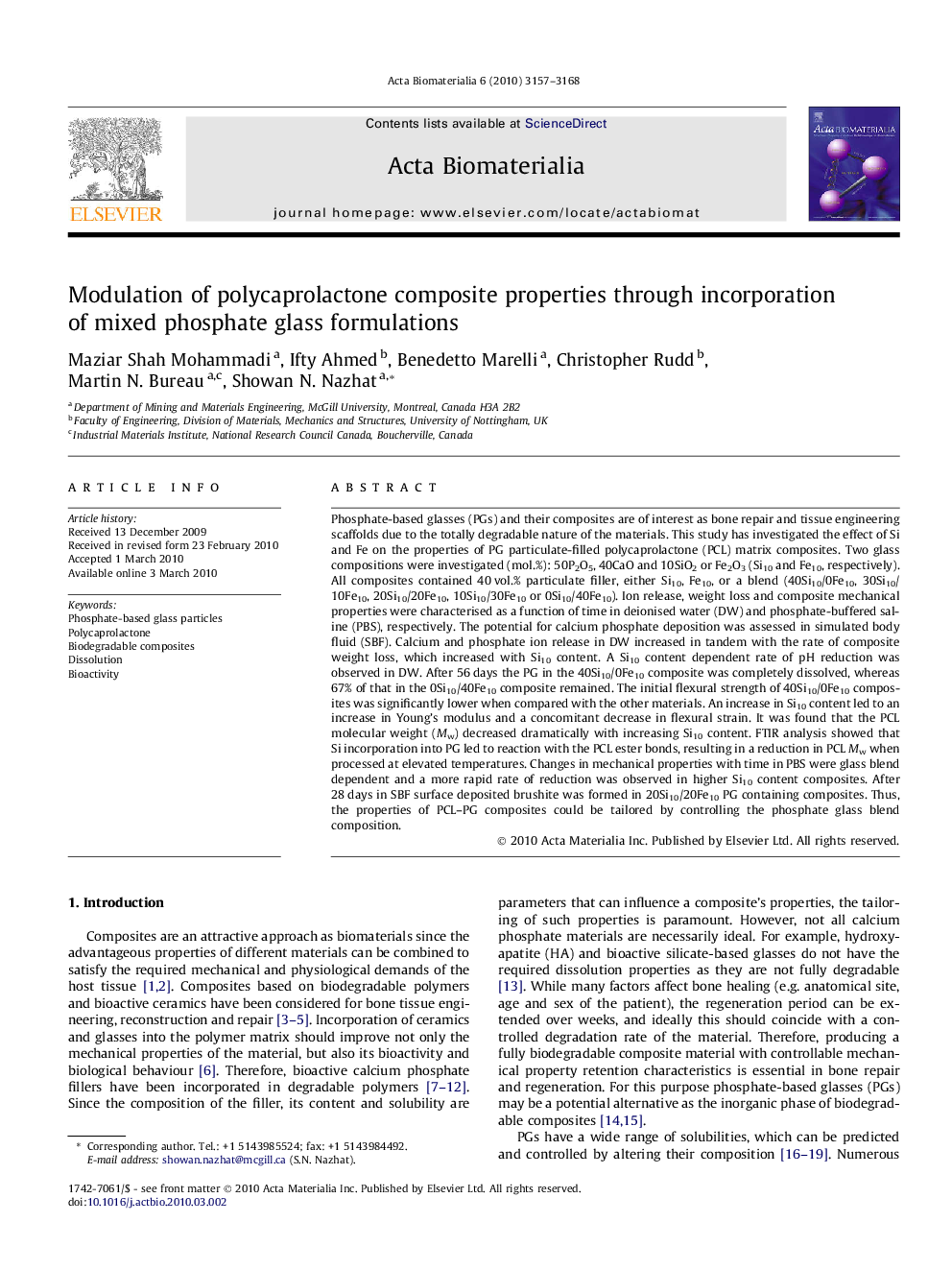| Article ID | Journal | Published Year | Pages | File Type |
|---|---|---|---|---|
| 2280 | Acta Biomaterialia | 2010 | 12 Pages |
Phosphate-based glasses (PGs) and their composites are of interest as bone repair and tissue engineering scaffolds due to the totally degradable nature of the materials. This study has investigated the effect of Si and Fe on the properties of PG particulate-filled polycaprolactone (PCL) matrix composites. Two glass compositions were investigated (mol.%): 50P2O5, 40CaO and 10SiO2 or Fe2O3 (Si10 and Fe10, respectively). All composites contained 40 vol.% particulate filler, either Si10, Fe10, or a blend (40Si10/0Fe10, 30Si10/10Fe10, 20Si10/20Fe10, 10Si10/30Fe10 or 0Si10/40Fe10). Ion release, weight loss and composite mechanical properties were characterised as a function of time in deionised water (DW) and phosphate-buffered saline (PBS), respectively. The potential for calcium phosphate deposition was assessed in simulated body fluid (SBF). Calcium and phosphate ion release in DW increased in tandem with the rate of composite weight loss, which increased with Si10 content. A Si10 content dependent rate of pH reduction was observed in DW. After 56 days the PG in the 40Si10/0Fe10 composite was completely dissolved, whereas 67% of that in the 0Si10/40Fe10 composite remained. The initial flexural strength of 40Si10/0Fe10 composites was significantly lower when compared with the other materials. An increase in Si10 content led to an increase in Young’s modulus and a concomitant decrease in flexural strain. It was found that the PCL molecular weight (Mw) decreased dramatically with increasing Si10 content. FTIR analysis showed that Si incorporation into PG led to reaction with the PCL ester bonds, resulting in a reduction in PCL Mw when processed at elevated temperatures. Changes in mechanical properties with time in PBS were glass blend dependent and a more rapid rate of reduction was observed in higher Si10 content composites. After 28 days in SBF surface deposited brushite was formed in 20Si10/20Fe10 PG containing composites. Thus, the properties of PCL–PG composites could be tailored by controlling the phosphate glass blend composition.
